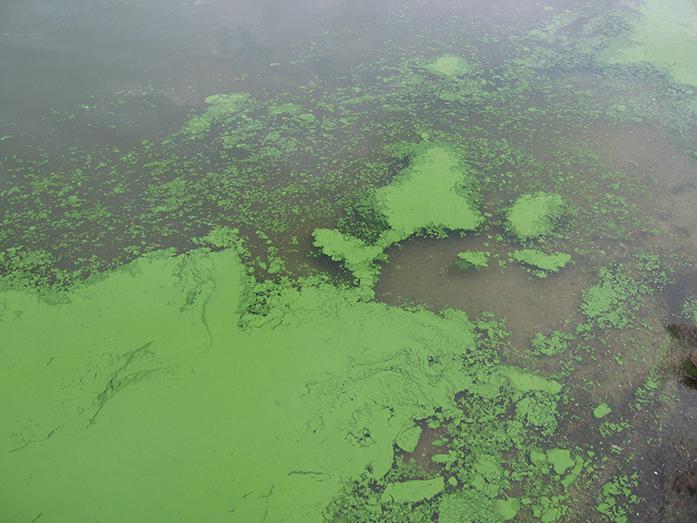By Gage Miskimen
[email protected]
Adding nutrients to the average plant can cause it to bloom — and that’s a good thing. But when fertilizer runs off of soil and into lakes, bleeding nutrients into the water, it causes some serious problems.
Lakes across the state experienced that problems with algal blooms this summer.
The exact cause of the blooms is unknown, but Stu Schmitz, an environmental toxicologist for the Iowa Department of Public Health, noted some possibilities.
“These locations [beaches] have been monitored. What we suspect and what science indicates is the blooms are caused by a number of things: elevated numbers of nutrients in the water mixed with the heat. It depends,” he said. “Sometimes you have ample rainfall after a drought or a year that you didn’t have a lot of rain, and the next year you do have a lot of rain, it appears you would have more nutrients in the water, and the weather could produce more algal blooms.”
According to the National Wildlife Federation, algal blooms and their toxins can be harmful to the wildlife and fish in the area. The federation says nutrients, particularly phosphorus and nitrogen, which are used in many fertilizers, are contributing factors.
Many lakes in Iowa have been affected by blooms, including Lake Macbride near Solon. However, the Coralville Reservoir has not experienced the blooms.
Dee Goldman, the operations manager for the Army Corps of Engineers, said the Reservoir has a high recovery rate because of the water comes in and goes out relatively quickly.
Karen Grimes of the Iowa Department Natural Resources believes much the same.
“This year’s been particularly bad, because we’ve had a lot of rain, and this causes fertilizer runoff,” she said. “Rain will wash off whatever is on the landscape into our lakes and streams, so anything on the land with nutrients will run off. That’s a likely cause. In order to have that growth of blue-green algae, you need nutrients. It’s a likely cause, but it’s not exactly known.”
Numerous beaches closed because of blooms, and more beaches expect closures before the summer ends. And that doesn’t happen just in Iowa.
Last year, a major bloom in Lake Erie contaminated it and cut off drinking water to half a million people for two days. Wildlife suffers as well. Blooms have led to the death of fish in Texas and otter deaths in California.
The high toxins in these blue-green algae blooms are harmful to humans as well. Testing for microcystins (blue-green algae) is done weekly at around 40 lakes in Iowa by Natural Resources.
Schmitz warns those who may have come in contact with the algae, “We require health-care providers if they suspect a person they see in their office has been infected from algal blooms to contact us. The main types of exposures would be gastrointestinal symptoms: stomach pain, nausea, diarrhea, headaches, fever, or even rashes and hives on the areas that were exposed to the water.”



